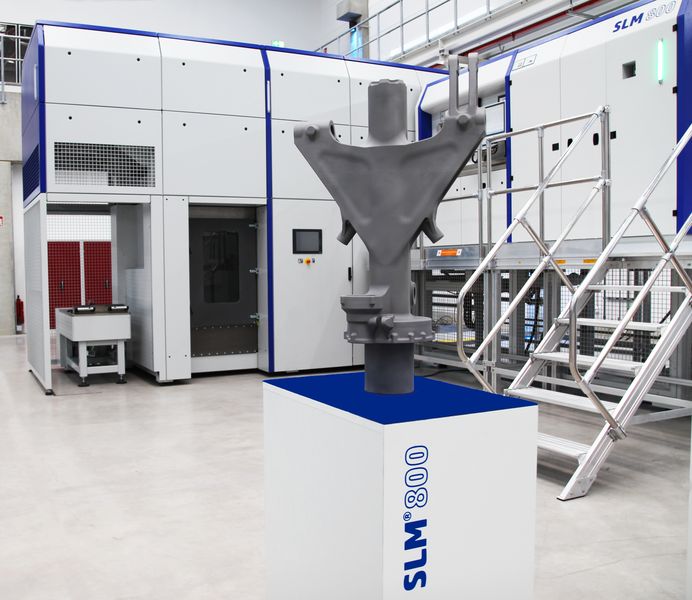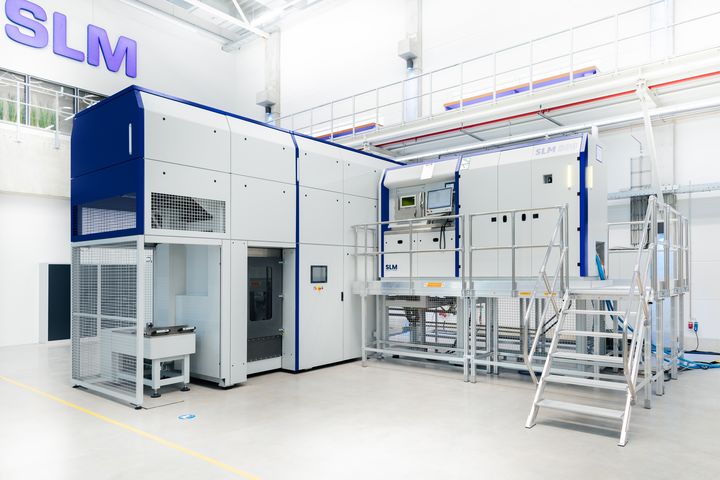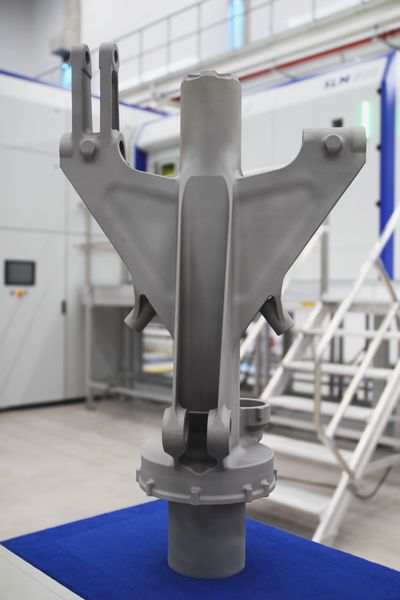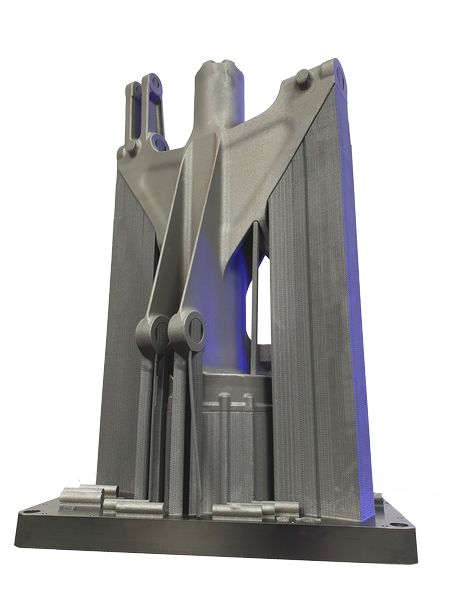
SLM Solutions described an interesting metal 3D printed part made for an aerospace client.
The part in question was a nose landing gear for a business jet.
I’m interested in this project because of the nature of the part: it is clearly a significantly flight-critical component. Should the nose gear fail, you have yourself a crash, instantly.
Flight-critical parts are the eventual goal for all those working in aerospace on additive manufacturing. Years ago there was plenty of skepticism on the use of AM parts in aircraft due to these technologies’ newness to the industry, but that has been changing.
Initially 3D printer companies and their clients produced non-flight-critical parts, like seat holders, wall paneling, etc., which were at far lower risk should they fail during flight. This provided a means for aerospace companies to begin experimenting with AM techniques and equipment, but ultimately led to deeper involvement and use on actual flight critical parts.
The goal here is to leverage AM’s ability to build parts with unusual geometries that are not able to be built easily with traditional approaches. The aerospace industry can then “lightweight” as many parts as possible, shaving off many kilograms for each aircraft.
But each and every part has to be very carefully considered. Radically new part designs have to be imagined, developed and tested extensively before they can even consider certification. Slowly there are increasing numbers of flight-critical parts appearing in aircraft, but the overall number is still low.
Experiments such as the one performed by Safran Landing Systems could show the way for others to follow. The French company designs, develops and manufactures all types of aircraft landing gear, wheels and brakes. It’s the world’s largest producer of these types of parts.

They must have seen the potential advantages in using AM to lightweight their landing gear systems, and attempted an experiment to demonstrate the feasibility of the approach. They partnered with SLM Solutions, which provided a massive SLM 800 quad-laser metal 3D printer for the job.

The part is quite large by metal 3D printing standards: 455 x 295 x 805 mm. This landing gear component was 3D printed in titanium, and apparently weighs 15% less than its conventionally made counterparts.
That 15% may not sound like much, but it is quite significant. Imagine if many more parts on the aircraft were similarly reduced, and you can see what happens. A typical business jet might weigh 6,000kg, so a reduction of 15% would imply additional payload capacity of up to 900kg, or corresponding reductions in fuel consumption. Significant!
It appears that Safran Landing Systems may have selected SLM Solutions partly due to the unusual orientation of the SLM 800 machine: it has a vertical build chamber.

This allowed Safran Landing Systems to 3D print the landing gear component in a vertical orientation, as shown here — with plenty of supports to be removed. It may be that this orientation also provided additional strength for the inevitable vertical impacts the landing gear will have to endure while in use.
I’m hoping this demonstration is noted by other aerospace companies, which might be encouraged to perform similar experiments on their own aircraft components. With more examples like this showing the way, the future will surely be more additive.
Via SLM Solutions
